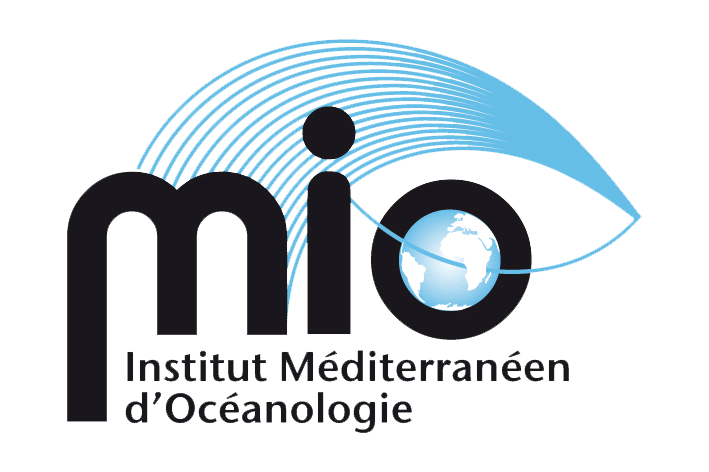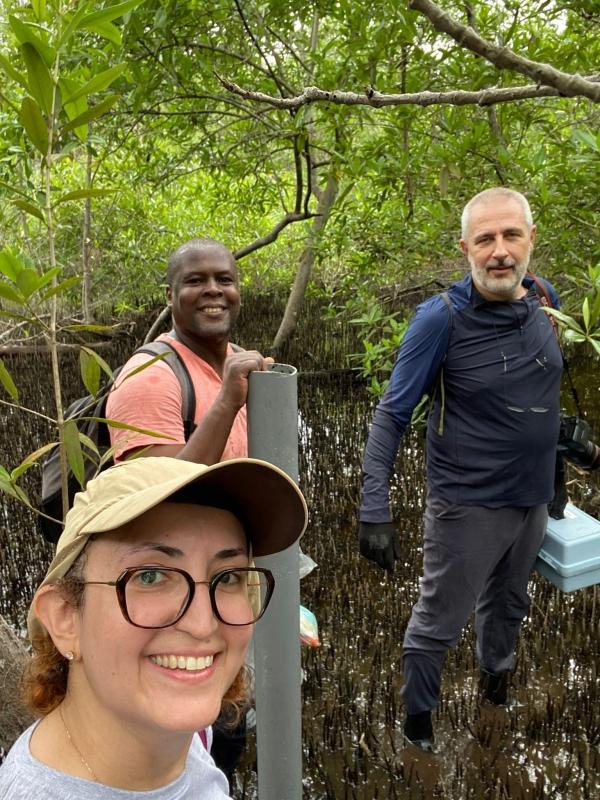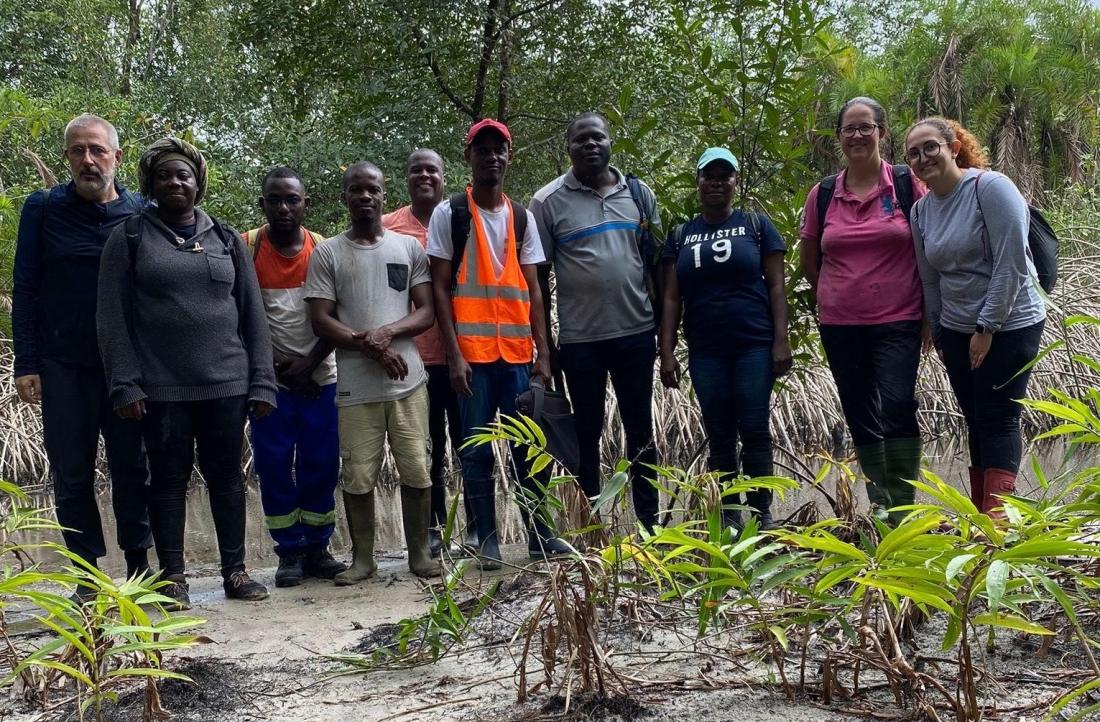As part of Amanda Tadini's MOPGA (Make Our Planet Great Again) post-doc, the lability of carbon stored in mangrove sediments is being studied. Although it is generally accepted that mangroves are important storage sites for carbon, but also for contaminants, there are few studies on the stability of this carbon, particularly in the event of resuspension, as is the case with coastline erosion. In support of the post-doctorate and in conjunction with the JEAI PRO2GMA partners, the LARME laboratory (UTSM) and the LAGRAC laboratory (UOB), a sampling mission was carried out at the beginning of November in a mangrove in the Akanda region, in the buffer zone of the national park.
These three samples yielded around 70 cm of sediment, which will be analysed for lability using a proxy method based on BOD measurement with Oxitop-type equipment. Similarly, this mission enabled viability experiments to be carried out on site, with micro-organisms from the local system. A. Tadini took the opportunity to give a presentation of his work and a demonstration of sampling and analysis to the UOB masters students, who were delighted to take part in the sampling.
On return to the laboratory, the samples will be analysed to define the stock of blue carbon, its lability and the consequences of this degradation on the release of metallic contaminants stored in the sediments. All the participants in this mission are warmly thanked, in particular Dr. ABAKER Madi from LARME and Dr. OKANGA-GUAY Marjolaine for the organisation, the logistics and the welcome at LAGRAC, as well as the ANPN for the sampling authorisations.
From left to right: Stéphane MOUNIER (MIO, UTLN), Christy Ashtone NKOLLO (LAGRAC, UOB), Haldin Danhel MADINGA DOUNOUGOU (UOB), Donald MBA NANG (ANPN),
Madi ABAKER (LARME, USTM), Randy , Igor AKENDENGUE AKEN (LARGRAC, UOB), Mariela NZAMBE (UOB), M. OKANGA GUAY (LAGRAC, UOB), Amanda TADINI (MIO, UTLN)






